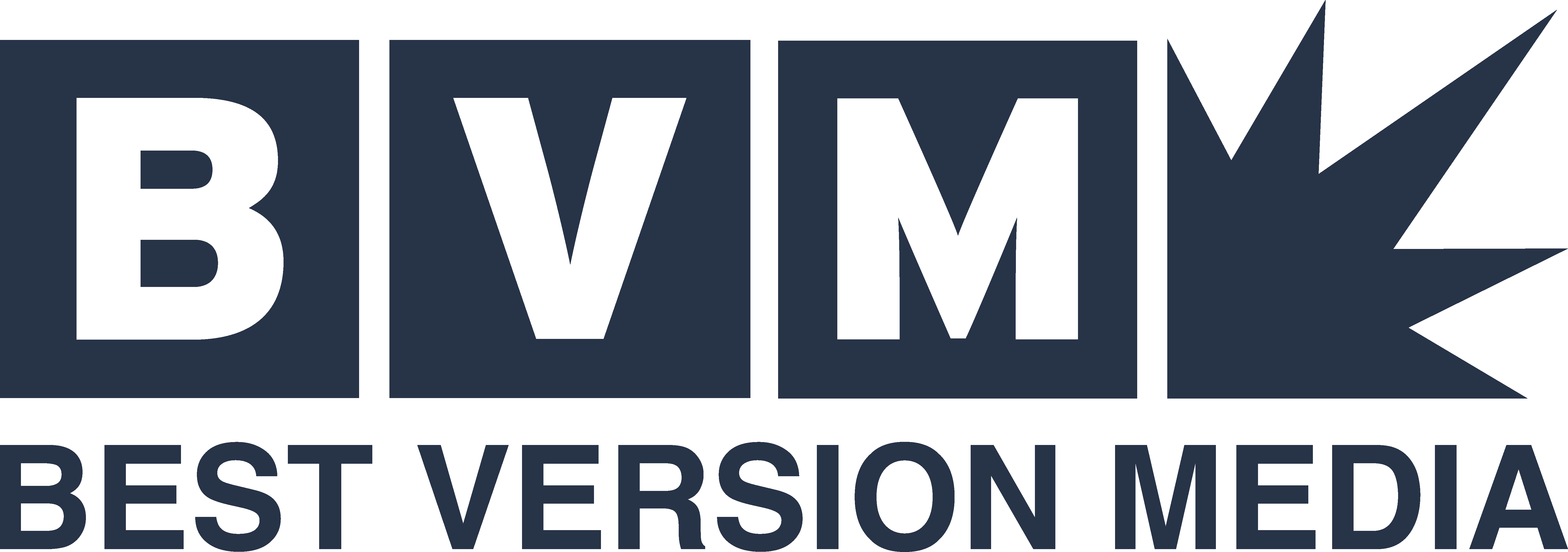
From Clicks to Clients: Building a Marketing Funnel For Your Local Business
A marketing funnel is a blueprint of the multi-step journey that a customer goes through, from first learning about your business to making a purchase. Its importance lies in its ability to attract, engage and convert potential customers.
Multiple variations of marketing funnel strategies exist, including the AIDA model: awareness, interest, desire and action. Another of the most common marketing funnels is broken down into three stages: top of funnel (TOFU), middle of funnel (MOFU) and bottom of funnel (BOFU).
Each process within a marketing funnel strategy is vital to attracting customers and boosting your visibility. Here’s a closer look at the TOFU, MOFU and BOFU stages, and how to build a marketing funnel that will optimize results for your business.
Why a Marketing Funnel Can Help Your Business
A marketing funnel can increase the bottom line for a business, but is ultimately focused on growth. By understanding and enhancing a customer’s journey while also making it more simplistic and convenient, businesses have a higher likelihood of increasing number of consumers and consumer retention.
It’s important to remember that the purchasing process is rarely linear, particularly as more and more business is conducted digitally. Consumers often bounce around, with their shopping unlikely to be limited to one business or specific area.
They can also enter the marketing funnel at any point of the buying process. For example, a customer with a water heater issue might immediately be in the BOFU stage while searching for a plumber. Meanwhile, someone searching for a dentist for a simple teeth cleaning will likely enter during the TOFU or MOFU stages, and will explore what the best option is for them before making a decision.
That makes a marketing funnel far from a one-size-fits-all strategy, but it remains a valuable blueprint for how to create a plan that can attract buyers. Businesses should focus on how they can be visible to potential customers and optimize best practices at all points during the buying process.
One of the other important benefits of a marketing funnel is the data that it provides. Businesses can further track consumer behavior and contextualize marketing results throughout the process. This allows them to tailor their marketing approach while identifying potential weaknesses in the customer journey, or their own marketing strategy.
TOFU: Catching Attention in the Awareness Stage
A marketing funnel begins when customers are in the early stages of researching a product or service. The TOFU stage, also often referred to as the awareness stage, involves introducing your brand to a new audience, including those who might not realize they need your product or service yet.
This process can be done through multiple channels, including SEO blog posts, social media videos or targeted digital ads, aiming to help potential customers discover your business while informing them about the capabilities of your product or service.
During the TOFU stage, the immediate goal isn’t selling. Rather, it’s about visibility and showcasing the value your business can provide. Creating brand awareness helps you become top of mind for potential consumers when they may need you, ultimately leading to conversions when it becomes time to make a purchase.
A company’s online presence has become a significant factor in increasing visibility during the early stages of the buying process, and goes beyond just your website. According to Amazon Ads, 84% of consumers begin their online searches somewhere other than a brand’s owned website, making it important that your business is being marketed and found through multiple channels.
MOFU: Educating and Building Trust in the Consideration Stage
After customers discover your business, and likely many of your competitors, the MOFU stage, otherwise known as the consideration or interest stage, begins. This is when potential buyers are evaluating their options, often actively searching for a solution to a problem they might have. While they are aware of your business, consumers are likely not yet ready to purchase at this stage.
At this point, providing valuable content while trying to set your business apart from your competition is key. This can be done through delivering email newsletters, case studies, customer testimonials or service and product comparisons. Detailed guides or educational videos about how your business handles a particular situation can also prove beneficial.
This process is often referred to as lead nurturing, which involves building relationships with potential customers to help move them down the sales funnel. Personalizing messages by addressing specific pain points and preferences can be key during this step. According to The Small Business Blog, personalizing lead nurturing campaigns can result in a 20% boost in conversions, while 76% of consumers say they are more likely to buy from brands that personalize their content.
Ultimately, MOFU looks to build trust from consumers while increasing the likelihood that they will utilize your business by differentiating from the competition. Businesses should aim to demonstrate how they can provide a solution for potential customers, while presenting themselves as knowledgeable and reliable.
BOFU: Driving Conversions in the Decision Stage
The BOFU stage, which may also be recognized as the conversion, decision or action stage, gives businesses an opportunity to close the deal and encourage a purchase. At this point, customers are ready to commit to a decision, but might need one final nudge to prove that your business is the exact match for them.
This is where companies can get more aggressive and targeted in their advertising, perhaps through promotions or limited-time offers like “$50 off your first service call – this week only.” Businesses can also look to live chat, provide consumers with immediate booking forms, retarget through digital ads or give other calls to action (CTAs) to potential buyers. A detailed website or an exceptional customer service experience can also help set your business apart.
Overall, the BOFU stage is about turning customer interest into conversions. However, the process doesn’t stop there. Equally important is retaining customers and building loyalty that will have them coming back to your business time and again when a need arises. Delivering quality service through a seamless purchasing process can build trust. Following up after the purchase through email campaigns or loyalty program offers can help generate lifelong customers.
Loyalty programs in particular are becoming increasingly significant when it comes to a continued relationship between a consumer and business, as a survey from LendingTree states that 50% of consumers in the United States believe that loyalty programs are more important than ever, with 80% of American consumers being members of at least one loyalty program.
How To Build a Marketing Funnel For Your Business
There are multiple steps that come with implementing a marketing funnel for your business, including:
- Identifying your audience – Identifying a target audience is a key part of any marketing strategy. This can be done through analytics, customer feedback and analyzing other demographic data to understand the ideal journey of potential consumers, from discovering your brand to becoming a buyer. An analysis should feature customer pain points, needs and aspirations.
- Mapping content to your funnel stages – Businesses should set their marketing objectives and select the best channels and platforms for them based on their target audience. Specific content should be created or repurposed to target potential consumers throughout each marketing funnel stage. During the TOFU process, creating blog posts or social media videos could be helpful to captivate your audience. Within the MOFU stage, sending email newsletters or customer testimonials could help sway potential consumers toward your business. By the BOFU stage, businesses can have specific promotions or other strategic CTAs in place that encourage a purchase.
- Optimizing your online presence – Making sure your online presence is a strength can greatly help during the TOFU stage. Accurate listings, responding to reviews and having a complete Google Business Profile helps companies appear higher in search rankings, and in turn can give them greater visibility when a customer is searching for a particular product or service.
- Send messages while utilizing other marketing tools – Setting up various email campaigns or sending out things like detailed checklists and service comparisons with relevant and timely information during the MOFU stage will help remind customers of your brand and value. Personalized emails and messages can also help lead customers further down the funnel.
- Encourage purchases with CTAs – Businesses should aim to create conversions by the BOFU stage through promotions or other CTAs. They should also provide additional materials that show why their product or service best suits the consumer, potentially through product or service demonstrations, or case studies that validate how your business has benefited customers previously.
- Optimize post-purchase experience – The success of a business doesn’t stop at conversions. Retaining customers should be a focal point by prioritizing their needs once again after a purchase. This can be done through a personalized follow-up message, a survey or feedback request, offering future promotions or discounts, or promoting loyalty programs.
- Analyze performance and adapt – Using various tracking tools like Google Analytics can help businesses measure the impact of their marketing funnel strategy. Metrics to measure during the TOFU stage include impressions and click-through rate (CTR). During the MOFU stage, businesses should analyze things like branded search index, time on page and bounce rate. By BOFU, conversion rate and customer acquisition cost should be considered. Analyzing the numbers and making changes to your strategy is often necessary to not only obtain additional customers, but also keep them around for the long haul.
Industries Where a Marketing Funnel Can Prove Beneficial
Many notable service industries have the ability to implement a marketing funnel that can help grow their business. Here are some examples:
Plumbing
A plumbing company can begin a marketing funnel strategy by optimizing its Google Business Profile, or investing in Google Ads or Meta Ads to give it a better opportunity of showing up higher in search results when someone has a query like, “emergency plumber near me.”
Following the TOFU stage where potential customers are exploring their options, a plumbing company can look to further attract a client by sending educational email campaigns, or perhaps offering a pop-up discount like “$25 off your first service.”
Additional offers within and following the BOFU stage, such as a membership that offers annual checkups and priority service in urgent situations, can help obtain repeat customers. A post-job survey or offering customers to join a referral program could be used for increased retention as well.
Australian-based Horncastle Plumbing is a good example of a company in the industry that has found success via a marketing funnel strategy. Seeking to increase digital conversion rates, Horncastle Plumbing partnered with Rise Digital Media, who did in-depth research to identify the best keywords to help it rise toward the top of the search rankings. Through website optimization and digital advertising, Horncastle Plumbing saw increased visibility to the tune of over 722 leads across a one-year span. The company’s conversion rate also increased by 52.7%.
Restaurants
Similar to other service industries, having accurate listings online is crucial for restaurants, particularly if local customers are searching things like “best restaurants near me.” Being found through search is important, but many restaurants can also look to promote through display ads or social media ads to further target their local audience.
As the marketing funnel moves to the MOFU stage, a strong strategy for restaurants can be posting appealing pictures of the food and drinks they offer, while also featuring customer testimonials. Additional social media posts or ad retargeting can also be beneficial.
Restaurants have several options to seal the deal with potential customers in the BOFU stage. Offering coupons when signing up for an email newsletter, promo codes via SMS texts, or free delivery or discounts for first-time app users are all tactics that can draw consumers to your brand. From there, driving loyalty through reward programs, punch cards or in-app credits can help obtain repeat customers.
Sweetgreen, a health-focused restaurant chain that operates across 23 states, has seen significant growth in recent years thanks to its marketing funnel utilization. Sweetgreen has created heightened awareness of its brand through social media platforms, showcasing appealing images of its food, while also promoting sustainability efforts and community involvement. An easy-to-use mobile app, email campaigns featuring limited-time offers and content about eating healthy has also drawn in consumers during the final two stages of the marketing funnel. Sweetgreen offers a rewards program where customers earn points through purchases as well, fostering greater loyalty while attracting repeat customers.
HVAC
Similar to plumbing, businesses in the HVAC industry are often sought after for immediate needs when it comes to heating, cooling and ventilation. This can make the TOFU stage pivotal to increase awareness of your business, perhaps through TV, direct mail or digital ads during peak times before the summer or winter.
Once in the MOFU stage, HVAC companies can promote educational blog posts or create short videos giving tips on how to maintain heating and cooling systems. Sharing “before and after” system installs on social media could also be a valuable tool to attract customers.
Retargeting specific demographics while providing service offers like a free home air quality assessment for email subscribers, or first-time customer discounts, can further help seal the deal. Additional offers like a discount for referrals can grow a customer base further, while service reminder emails and membership plans can add consumer retention and loyalty.
There are several real-world examples of HVAC companies fostering growth in a similar manner, including Next Level HVAC based in Santa Rosa, California. While partnering with Fitz Designz, Next Level HVAC enhanced its website with informative, SEO-focused content, targeted its audience through online ads and optimized its Google My Business Profile, all tools that would help it appear higher in search results during the TOFU stage. Ultimately, the adjustments helped organic traffic increase by 511%, while also increasing total conversions by the BOFU stage by 245%.
Best Version Media Can Assist in Your Marketing Funnel Strategy
Best Version Media can help increase your online presence by managing your listings and reviews, a critical step of the TOFU stage, all from one convenient dashboard.
BVM’s display and social media ad campaigns can help put your business in front of a wider audience, potentially leading to more conversions as consumers work their way through the marketing funnel.
Connect with BVM today to create a marketing strategy that works best for your business.
FAQs
1. What is a marketing funnel for local businesses and why is it important?
A marketing funnel is the step-by-step journey your customers take, from discovering your business to making a purchase. For local businesses, it’s especially important because it helps attract attention in a crowded marketplace, nurture potential leads and guide them toward taking action, like booking a service or visiting your location. The funnel typically includes three main stages: awareness, consideration and decision.
Understanding how people move through these stages allows you to deliver the right message at the right time, which increases your chances of converting leads into loyal customers. It also helps you track performance and refine your marketing strategy based on real consumer behavior.
2. How do I create a marketing funnel for my local business?
To build a successful marketing funnel, start by learning who your ideal customers are and how they search for products or services in your area. From there, focus on creating content and campaigns that meet their needs at each stage of the buyer’s journey. Early on, that might mean publishing educational blog posts or running local awareness ads. As potential customers begin considering your business, you can offer things like customer testimonials, email newsletters or helpful comparisons to build trust.
When they’re ready to make a decision, clear calls-to-action, special offers and a strong online presence, like a mobile-friendly website and updated business listings, can help seal the deal. The funnel doesn’t end at the sale either; following up with loyalty programs, feedback requests or ongoing email updates can turn one-time buyers into repeat customers.
3. What types of businesses benefit the most from using a marketing funnel?
Marketing funnels are especially effective for local service-based businesses that rely on consistent foot traffic or repeat customers. This includes industries like plumbing, HVAC, dentistry, fitness and restaurants. These businesses often have customers who start their search online and need a combination of visibility, trust-building and motivation to convert.
For example, a plumber might use local SEO and emergency service ads to attract high-intent leads quickly, while a restaurant might rely more on social media, online reviews and limited-time promotions to stand out. No matter the industry, a well-built funnel helps businesses stay top-of-mind, compete more effectively and grow sustainably over time.
Written by Cody Kluge
BVM Digital Content Specialist






